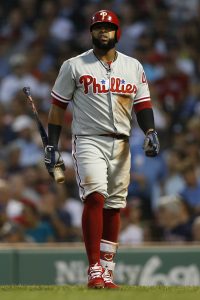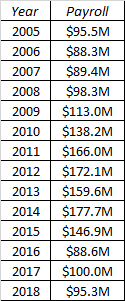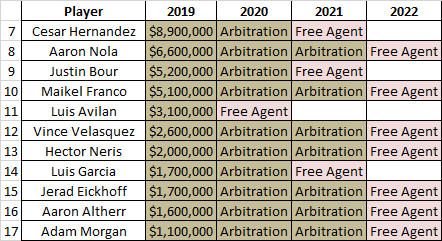Five different teams made qualifying offers to free agents this winter. Six of the seven players turned down the one-year, $17.9MM offer. Here’s what each of those teams stands to gain in draft pick compensation.
Astros
The Astros made a qualifying offer to Dallas Keuchel. The Astros were neither a revenue sharing recipient nor a competitive balance tax payor. Therefore, regardless of the size of the contract Keuchel signs, the Astros will receive draft pick compensation after Competitive Balance Round B, which takes place after the second round.
Diamondbacks
The Diamondbacks made qualifying offers to Patrick Corbin and A.J. Pollock. The D’Backs were a revenue sharing recipient. If Corbin or Pollock signs for a guarantee of $50MM or more, the D’Backs get draft pick compensation after the first round. If one of the players signs for less than $50MM, the Diamondbacks get draft pick compensation after Comp Round B. Corbin is a near-lock to sign for more than $50MM, while Pollock is a borderline case. Of the six qualified free agents, the $50MM contract size threshold only matters in the cases of Corbin and Pollock.
Dodgers
The Dodgers made a qualifying offer to catcher Yasmani Grandal (Hyun-Jin Ryu already accepted his). Like the Astros, they were neither a revenue sharing recipient nor a competitive balance tax payor. Regardless of the amount Grandal signs for, the Dodgers will receive draft pick compensation after Competitive Balance Round B.
Nationals
The Nationals made a qualifying offer to Bryce Harper, and the Nats were a competitive balance tax payor. Therefore, the Nationals will receive draft pick compensation after the fourth round regardless of the size of contract Harper signs.
Red Sox
The Red Sox made a qualifying offer to Craig Kimbrel, and the Sox were a competitive balance tax payor. Therefore, the Red Sox will receive draft pick compensation after the fourth round regardless of the size of contract Kimbrel signs.
The Nationals and Red Sox stand to gain fairly unimpressive draft picks, likely somewhere in the 140s. The Astros and Dodgers should get picks in the 80s. The D’Backs should get a pick in the 30s for Corbin. Pollock could land them a pick in the 30s or the 80s depending on whether he gets $50MM.





